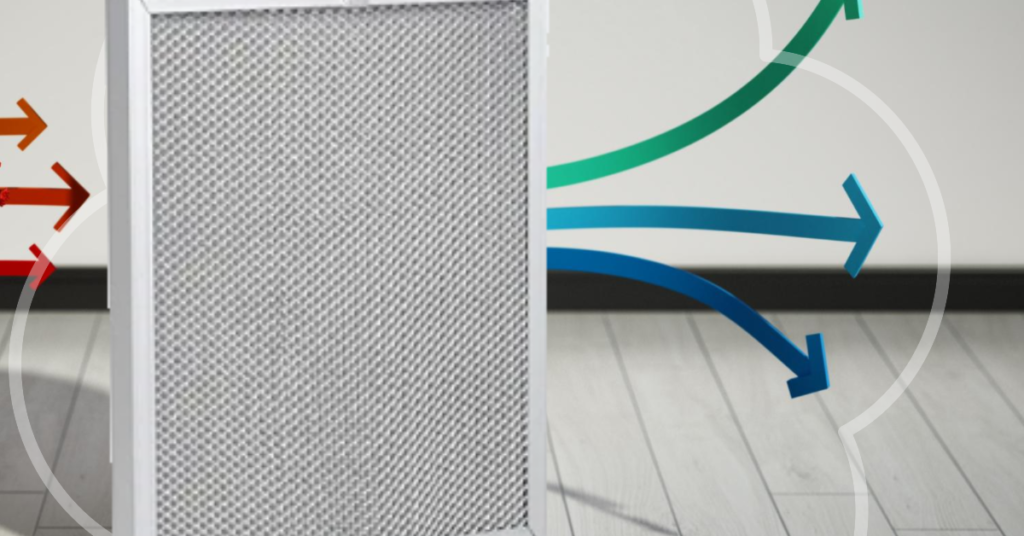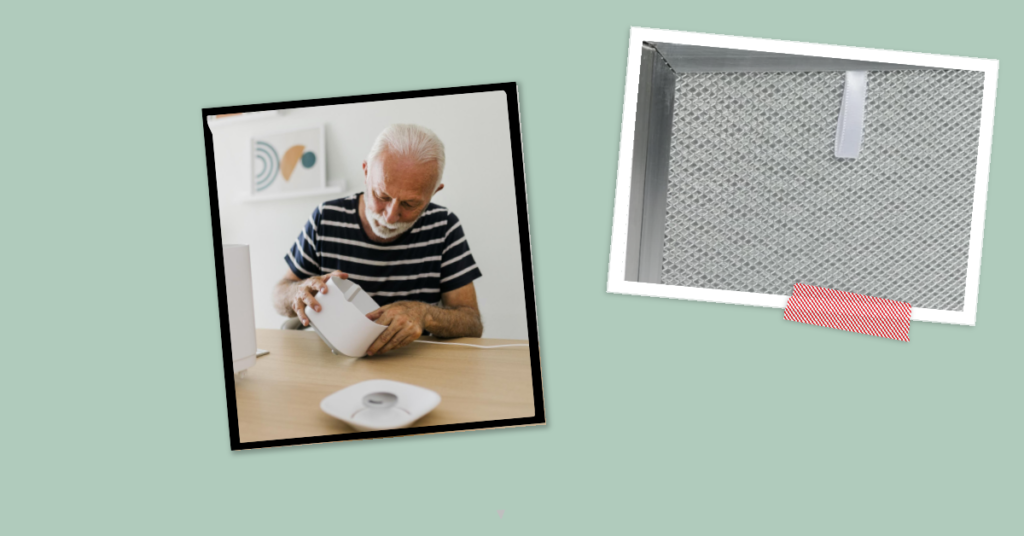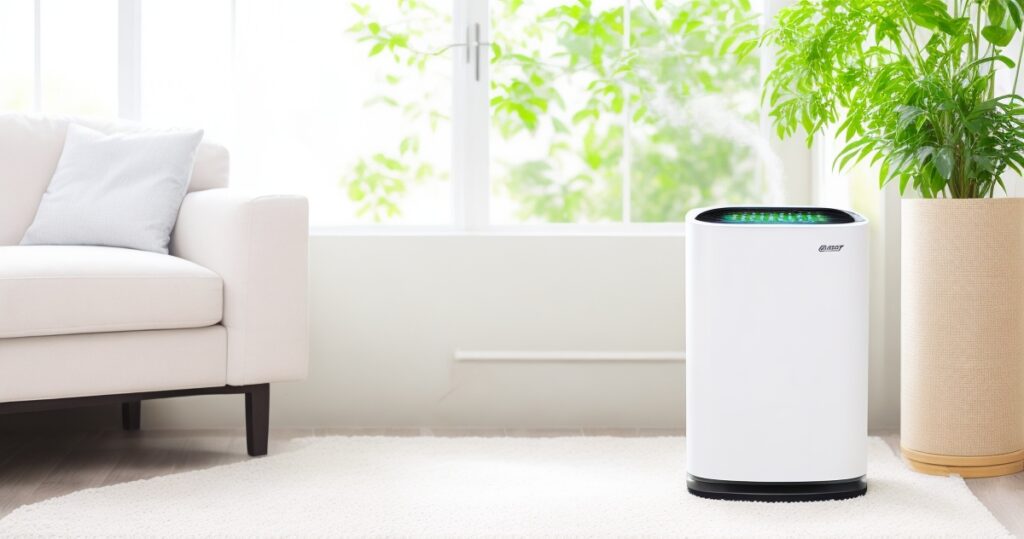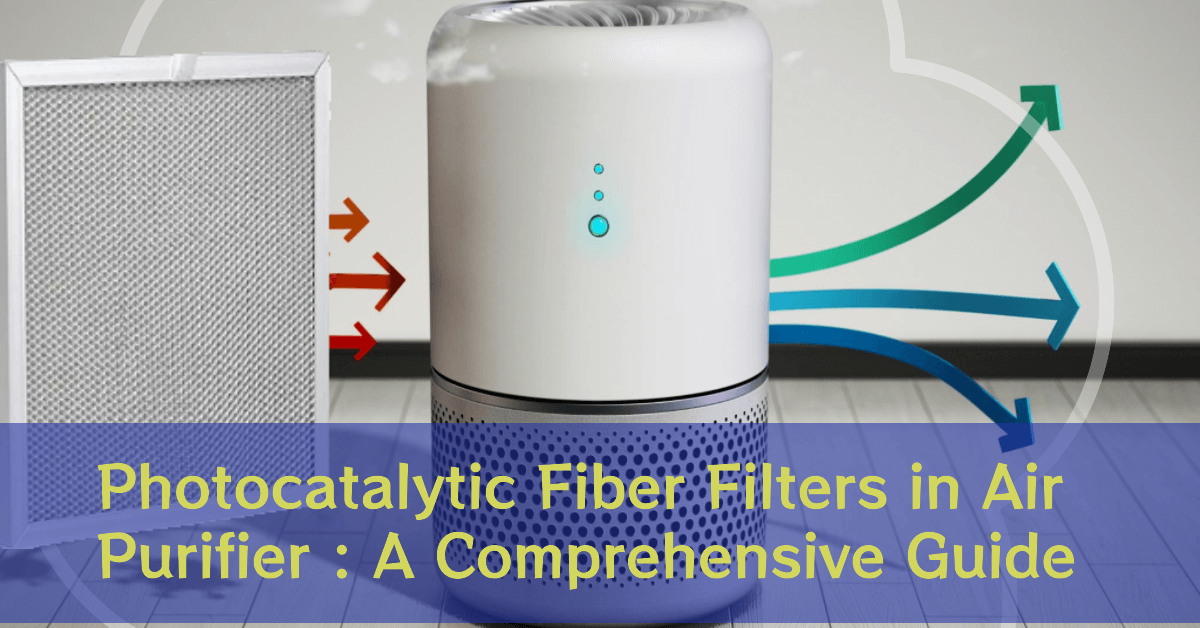Photocatalytic Fiber Filters in Air Purifier utilize the power of photocatalysis to efficiently capture and neutralize a myriad of airborne pollutants. This groundbreaking technology is redefining the way we perceive and achieve optimal air quality within our living spaces.
Indoor air pollution, often underestimated, can have profound implications on our health and well-being. As the focus on creating healthier living environments gains momentum, Photocatalytic filters seamlessly integrate into air purifiers, employing a sophisticated process where photocatalysts initiate the breakdown of pollutants upon exposure to light. This intricate mechanism ensures that not only common allergens but also harmful particles are effectively removed, promoting a healthier and safer indoor atmosphere.
Beyond the realms of residential spaces, the applications of Photocatalytic Fiber Filters extend to diverse environments, ranging from commercial and industrial settings to critical areas like medical and healthcare facilities. The versatility of these filters in capturing various airborne contaminants positions them as indispensable components in the pursuit of clean air. As we delve into the intricacies of Photocatalytic Fiber Filters, it becomes evident that their role extends far beyond mere filtration – they embody a transformative force shaping the quality of the air we breathe.
Introduction
Photocatalytic Fiber Filters play a crucial role in revolutionizing the landscape of air purification. Defined by their unique composition and functionality, these filters bring a new dimension to the quest for clean and healthy indoor air. This article delves into the definition of Photocatalytic Filters, explores the significance of air purification, and provides a brief overview of their integration into modern air purifiers.

A. Definition of Photocatalytic Fiber Filters
Photocatalytic Fiber Filters are advanced filtration systems that utilize photocatalysis to eliminate airborne contaminants. These filters are engineered with materials that, when exposed to light, trigger chemical reactions that break down and neutralize pollutants, resulting in cleaner air.
- Effective removal of particulate matter, allergens, and volatile organic compounds (VOCs).
- Utilization of photocatalysts, such as titanium dioxide, to facilitate the purification process.
- Integration of nanotechnology for enhanced filtration efficiency.
B. Importance of Air Purification
The need for clean air has never been more critical, given the rising concerns about indoor air quality and its impact on health. Airborne pollutants, ranging from dust and allergens to harmful gases, can lead to respiratory issues and other health complications. The integration of Photocatalytic Fiber Filters in air purifiers addresses this concern by providing an efficient and innovative solution for air purification.
- Reduction of indoor air pollution for improved respiratory health.
- Prevention of allergies and respiratory diseases caused by airborne particles.
- Enhanced overall well-being and productivity in indoor environments.
C. Brief Overview of Photocatalytic Fiber Filters in Air Purifiers
As technology advances, the incorporation of photocatalytic principles into fiber filters has become a game-changer in the air purification industry. These filters not only trap but also actively neutralize pollutants, providing a comprehensive solution for maintaining clean and healthy indoor air. The following sections explore the intricate workings of Photocatalytic Fiber Filters and their various applications.

How Photocatalytic Fiber Filters Work
Understanding the underlying mechanisms of Photocatalytic Fiber Filters is crucial to appreciating their effectiveness in air purification. This section elucidates the process of photocatalysis, the integration of this technology into fiber filters, and the intricate mechanisms involved in the removal of airborne particles.
A. Explanation of Photocatalysis
Photocatalysis is a catalytic process that occurs when photocatalysts, typically titanium dioxide, are exposed to light. In the presence of light energy, these catalysts generate reactive oxygen species, such as hydroxyl radicals, which exhibit strong oxidative properties. These radicals initiate a chain reaction, breaking down pollutants into harmless byproducts.
| Key Components | Photocatalysts (e.g. titanium dioxide) | Reactive Oxygen Species (ROS) |
| Process | Exposure to light initiates photocatalysis | ROS oxidize and break down pollutants |
| Result | Conversion of pollutants into harmless byproducts | Effective air purification |
B. Integration of Photocatalytic Technology in Fiber Filters
The incorporation of photocatalytic technology into fiber filters enhances their ability to actively neutralize airborne pollutants. Fiber filters are designed with a matrix of fibers coated or impregnated with photocatalytic materials, creating a synergistic effect that maximizes the purification process.
- Increased surface area for photocatalytic reactions.
- Optimal placement of photocatalytic materials within the filter matrix.
- Improved contact between pollutants and photocatalysts for efficient neutralization.
C. Mechanisms of Airborne Particle Removal
Photocatalytic Fiber Filters employ multiple mechanisms to remove airborne particles from indoor air. These mechanisms include mechanical filtration, adsorption, and the photocatalytic breakdown of pollutants. The combination of these processes ensures a comprehensive and efficient removal of a wide range of contaminants.
| Mechanism | Description |
| Mechanical Filtration | Physical trapping of larger particles within the filter matrix. |
| Adsorption | Attachment of smaller particles to the filter surface. |
| Photocatalytic Breakdown | Chemical transformation of pollutants into harmless substances. |

Advantages of Photocatalytic Fiber Filters
The adoption of Photocatalytic Fiber Filters brings forth a multitude of advantages, making them a preferred choice in the realm of air purification. This section explores the enhanced efficiency, longevity, durability, and versatility offered by these innovative filters.
A. Enhanced Air Purification Efficiency
One of the primary advantages of Photocatalytic Fiber Filters lies in their superior air purification efficiency. By actively breaking down pollutants at the molecular level, these filters ensure a thorough and continuous purification process, leading to significantly cleaner indoor air.
- Effective removal of a broad spectrum of airborne contaminants.
- Continuous purification through photocatalytic reactions.
- Enhanced performance compared to traditional filtration methods.
B. Longevity and Durability
Photocatalytic Fiber Filters boast an extended lifespan and exceptional durability, contributing to their cost-effectiveness. The integration of durable materials and the self-regenerating nature of photocatalysis ensures that these filters maintain their effectiveness over an extended period.
- Extended lifespan compared to traditional filters.
- Self-regeneration capabilities for prolonged durability.
- Reduced frequency of filter replacements, lowering maintenance costs.
C. Versatility in Capturing Various Airborne Contaminants
Unlike some traditional filters that may be specialized for specific contaminants, Photocatalytic Fiber Filters exhibit versatility in capturing a wide range of airborne pollutants. From particulate matter and allergens to volatile organic compounds, these filters provide comprehensive air purification for various indoor environments.
- Efficient capture of particulate matter and dust.
- Removal of allergens, mold spores, and pet dander.
- Neutralization of volatile organic compounds (VOCs) and odors.
Applications of Photocatalytic Fiber Filters
The versatility of Photocatalytic Fiber Filters extends across various settings, making them suitable for diverse applications. This section explores their usage in residential air purification, commercial and industrial settings, as well as medical and healthcare environments.
A. Residential Air Purification
Photocatalytic Fiber Filters find practical application in homes, ensuring a healthy living environment for residents. These filters cater to the unique challenges of residential settings, effectively addressing common pollutants and allergens that impact indoor air quality.
- Seamless integration into HVAC systems for whole-house purification.
- Reduced exposure to allergens, enhancing respiratory health for occupants.
- Elimination of household odors and volatile organic compounds (VOCs).
B. Commercial and Industrial Uses
The robust nature of Photocatalytic Fiber Filters makes them well-suited for challenging commercial and industrial environments. These filters play a pivotal role in maintaining air quality in spaces where airborne contaminants are generated in higher quantities.
- Application in manufacturing facilities to control particulate emissions.
- Effective removal of industrial pollutants, ensuring a safer working environment.
- Integration into ventilation systems for large commercial spaces.
C. Medical and Healthcare Environments
In medical and healthcare settings, where maintaining a sterile environment is paramount, Photocatalytic Fiber Filters prove invaluable. These filters contribute to infection control, creating a safer space for patients, healthcare professionals, and visitors.
- Reduction of airborne pathogens to prevent the spread of infections.
- Enhanced air quality in critical care areas, such as operating rooms and isolation units.
- Contribution to overall hygiene and infection prevention protocols.
Comparison with Traditional Air Purification Technologies
Comparing Photocatalytic Fiber Filters with traditional air purification technologies provides insights into their distinct advantages. This section contrasts these filters with HEPA filters, activated carbon filters, and UV-C light technology, highlighting the unique features that set them apart.
A. HEPA Filters
While HEPA filters are renowned for their mechanical filtration efficiency, Photocatalytic Fiber Filters offer an additional layer of active purification. HEPA filters excel in trapping particulate matter, but they may fall short in addressing certain volatile organic compounds and pathogens.
| Aspect | HEPA Filters | Photocatalytic Fiber Filters |
| Filtration Type | Mechanical (Trapping particles) | Mechanical + Photocatalytic (Trapping and neutralizing) |
| Particle Size | Effective for larger particles | Effective for particles of various sizes |
| Contaminants Addressed | Particulate matter | Particulate matter, VOCs, pathogens |
B. Activated Carbon Filters
Activated carbon filters excel in adsorbing odors and certain chemicals, but their efficacy may diminish over time. Photocatalytic Fiber Filters, on the other hand, provide continuous purification through photocatalysis, ensuring a longer-lasting solution for multiple contaminants.
| Aspect | Activated Carbon Filters | Photocatalytic Fiber Filters |
| Filtration Type | Adsorption | Mechanical + Photocatalytic (Trapping and neutralizing) |
| Odor Removal | Effective for odors | Effective for odors and continuous purification |
| Longevity | May require frequent replacement | Longer lifespan due to self-regeneration |
C. UV-C Light Technology
UV-C light technology is efficient in neutralizing pathogens, but it may not address particulate matter and certain chemicals. Photocatalytic Fiber Filters combine both mechanical and photocatalytic methods, providing a comprehensive solution for a wide range of contaminants.
| Aspect | UV-C Light Technology | Photocatalytic Fiber Filters |
| Purification Method | Pathogen neutralization | Mechanical + Photocatalytic (Trapping and neutralizing) |
| Contaminants Addressed | Pathogens | Particulate matter, VOCs, pathogens |
| Continuous Purification | May require additional filtration methods | Continuous purification through photocatalysis |
Challenges and Limitations
While Photocatalytic Fiber Filters offer groundbreaking solutions, it’s essential to acknowledge the challenges and limitations associated with their usage. This section explores potential risks, maintenance requirements, and cost considerations that users should be mindful of.
A. Potential Risks Associated with Photocatalysis
Despite the advantages of photocatalysis, there are potential risks, such as the generation of byproducts or the need for careful handling of certain materials. Understanding these risks is crucial for ensuring safe and effective use of Photocatalytic Fiber Filters.
- Possible generation of byproducts during photocatalytic reactions.
- Importance of selecting safe photocatalytic materials for filter construction.
- Consideration of potential health and environmental impacts.
B. Maintenance and Cleaning Requirements
Proper maintenance is essential to maximize the performance of Photocatalytic Fiber Filters. Regular cleaning and, if necessary, replacement of filters ensure sustained efficiency and prevent any potential issues that may arise due to a lack of maintenance.
- Routine cleaning to prevent clogging and maintain optimal airflow.
- Replacement of filters according to manufacturer recommendations.
- Monitoring and addressing any issues promptly to avoid system malfunctions.
C. Cost Considerations
While the long-term benefits of Photocatalytic Fiber Filters are significant, there are initial cost considerations that users should be aware of. Understanding the economic aspects, including the cost of filters, energy consumption, and potential savings, is crucial for informed decision-making.
- Initial investment in Photocatalytic Fiber Filters and air purifier systems.
- Comparative analysis of long-term costs and benefits.
- Assessment of energy consumption and its impact on operational costs.
Environmental Impact
As the world focuses on sustainable practices, evaluating the environmental impact of Photocatalytic Fiber Filters is imperative. This section assesses the sustainability of these filters, their energy consumption, and considerations related to disposal and recycling.
A. Sustainability of Photocatalytic Fiber Filters
Photocatalytic Fiber Filters contribute to sustainability by actively addressing indoor air quality issues. The reduction of pollutants and the potential to use renewable energy sources enhance their overall environmental impact.
- Contribution to indoor air quality improvement and reduction of pollutants.
- Potential for integration with renewable energy sources for reduced environmental footprint.
- Alignment with sustainable air purification practices.
B. Energy Consumption and Carbon Footprint
Understanding the energy consumption of air purifiers equipped with Photocatalytic Fiber Filters is crucial for assessing their overall environmental impact. The use of energy-efficient technologies and renewable energy sources contributes to a lower carbon footprint.
- Assessment of energy consumption in Photocatalytic Fiber Filter-equipped air purifiers.
- Integration of energy-efficient technologies for reduced environmental impact.
- Consideration of renewable energy sources for sustainable operation.
C. Disposal and Recycling
Proper disposal and recycling practices are essential for minimizing the environmental impact of used Photocatalytic Fiber Filters. Manufacturers and users alike play a role in ensuring responsible end-of-life management for these filters.
- Guidelines for the proper disposal of used Photocatalytic Fiber Filters.
- Exploration of recycling options for filter materials.
- Encouraging manufacturers to adopt environmentally friendly disposal practices.
Recent Technological Developments
The field of air purification is dynamic, with continuous advancements in technology. This section explores recent innovations in Photocatalytic Fiber Filter designs, their integration with smart home systems, and the anticipated future trends in air purification technology.
A. Innovations in Photocatalytic Fiber Filter Designs
Recent technological developments have led to innovative designs that enhance the performance and efficiency of Photocatalytic Fiber Filters. These innovations focus on improving filtration capabilities, durability, and overall user experience.
- Nanotechnology advancements for finer filtration and increased surface area.
- Integration of advanced materials for enhanced photocatalytic activity.
- Customized designs for specific indoor environments and pollutant profiles.
B. Integration with Smart Home Systems
The rise of smart home technology has extended to air purification systems, including those with Photocatalytic Fiber Filters. Integration with smart home systems enhances user convenience, monitoring capabilities, and the overall effectiveness of air purification.
- Connectivity with smart home platforms for remote monitoring and control.
- Sensor integration for real-time air quality feedback and adjustment.
- Automation features for optimized energy efficiency and user comfort.
C. Future Trends in Air Purification Technology
Anticipating future trends is essential for staying ahead in the air purification industry. The evolution of Photocatalytic Fiber Filters is likely to continue, with advancements in technology addressing emerging challenges and further optimizing indoor air quality.
- Exploration of advanced photocatalytic materials for enhanced performance.
- Integration of artificial intelligence for adaptive and predictive air purification.
- Collaborations between air purification manufacturers and environmental agencies for holistic solutions.
Regulatory Standards and Certifications
Compliance with regulatory standards and certifications is crucial for ensuring the safety and efficacy of Photocatalytic Fiber Filters. This section delves into the importance of adhering to air quality guidelines, industry standards, and certifications that validate product safety and performance.
A. Compliance with Air Quality Guidelines
Meeting established air quality guidelines is paramount for air purifiers equipped with Photocatalytic Fiber Filters. Adherence to these guidelines ensures that the purification process effectively addresses the specified limits for various contaminants.
- Understanding and compliance with regional and international air quality standards.
- Regular testing and monitoring to verify conformity with established guidelines.
- Ensuring the effectiveness of the purification process within defined pollutant limits.
B. Industry Standards for Photocatalytic Fiber Filters
Industry standards provide a benchmark for the performance and safety of Photocatalytic Fiber Filters. Manufacturers and users should be aware of these standards, which cover aspects such as filtration efficiency, material safety, and overall product reliability.
- Adherence to established industry standards for air purifiers and filters.
- Periodic evaluations and testing to maintain compliance with evolving standards.
- Certification from recognized organizations as a testament to product quality and safety.
C. Certifications Ensuring Product Safety and Performance
Obtaining certifications from reputable organizations is a key indicator of the safety and performance of Photocatalytic Fiber Filters. Certifications provide consumers with confidence in the efficacy and reliability of air purification systems.
- Seeking certifications from recognized bodies, such as the Environmental Protection Agency (EPA).
- Verification of compliance with specific standards, such as HEPA filtration efficiency.
- Transparent communication of certifications to consumers for informed decision-making.
Economic Considerations
Assessing the economic aspects of Photocatalytic Fiber Filters is essential for understanding their affordability, accessibility, and overall impact on the air purification industry. This section conducts a cost-benefit analysis, explores affordability for different consumer segments, and examines the economic implications for the broader industry.
A. Cost-Benefit Analysis of Photocatalytic Air Purifiers
A comprehensive cost-benefit analysis helps users evaluate the long-term value proposition of Photocatalytic Fiber Filters. While the initial investment may be higher, the sustained performance and benefits can outweigh the costs over time.
- Weighing initial costs against long-term benefits to determine the overall value of Photocatalytic Fiber Filters.
- Consideration of health-related savings, such as reduced medical expenses due to improved air quality.
- Assessment of potential energy savings and operational cost advantages.
B. Affordability and Accessibility for Different Consumer Segments
Ensuring the accessibility and affordability of Photocatalytic Fiber Filters is essential for widespread adoption. This section examines the cost implications for various consumer segments, promoting inclusivity in the use of advanced air purification technology.
- Exploration of pricing models that cater to diverse consumer budgets.
- Availability of financing options or incentives to enhance affordability.
- Consideration of government or industry initiatives supporting access to advanced air purification solutions.
C. Economic Impacts on the Air Purification Industry
Photocatalytic Fiber Filters have the potential to shape the economic landscape of the air purification industry. As these filters gain popularity, their economic impact extends beyond individual consumers to influence market dynamics, innovation, and job creation.
- Stimulating innovation and research within the air purification sector.
- Contributing to job creation in manufacturing, technology development, and maintenance services.
- Influencing market trends and competition, driving economic growth in the industry.
Conclusion
In conclusion, Photocatalytic Fiber Filters represent a groundbreaking advancement in the field of air purification. This comprehensive article has delved into the definition of these filters, their importance in the context of air quality, and the underlying mechanisms of their functionality. From exploring their advantages and applications to comparing them with traditional technologies, addressing challenges and limitations, evaluating environmental impact, and discussing recent technological developments, this article has provided a holistic view of Photocatalytic Fiber Filters.
A. Recap of Key Points
Photocatalytic Fiber Filters offer enhanced air purification efficiency, longevity, and versatility. They find applications in residential, commercial, and healthcare settings, showcasing their adaptability. A comparison with traditional technologies highlights their unique strengths, while considerations of challenges, environmental impact, and recent advancements contribute to a comprehensive understanding.
With a growing emphasis on sustainable practices and the need for cleaner indoor air, Photocatalytic Fiber Filters stand out as a reliable and effective solution. Their active purification mechanisms, coupled with recent technological innovations, affirm their vital role in ensuring healthier living and working environments.
As we embrace the era of advanced air purification, there is a collective responsibility to prioritize sustainable air quality practices. This includes not only the adoption of innovative technologies like Photocatalytic Fiber Filters but also adherence to regulatory standards, certifications, and conscious economic considerations. By taking informed actions, we contribute to a future where clean and healthy indoor air is a shared reality for all.
FAQ
What is a photocatalytic filter?
A photocatalytic filter is a type of air purification technology that uses a combination of a catalyst and light to break down and neutralize airborne pollutants, such as bacteria, viruses, and volatile organic compounds (VOCs). The catalyst, often titanium dioxide (TiO2), reacts with contaminants when exposed to light, leading to their degradation.
Are photocatalytic air purifiers safe?
Generally, photocatalytic air purifiers are considered safe when used as directed. However, there may be concerns about the production of byproducts during the photocatalytic process. It’s important to choose a reputable product that meets safety standards and to follow manufacturer instructions for proper usage.
What are the disadvantages of photocatalytic filters?
Limited range: Photocatalytic filters may have a limited range, making them most effective in smaller spaces.
Byproduct concerns: Some photocatalytic reactions can produce trace amounts of byproducts, such as ozone or other potentially harmful substances. Ensure that the chosen air purifier complies with safety regulations.
How do you clean a photocatalytic filter?
Cleaning procedures can vary among different air purifiers, so it’s crucial to refer to the manufacturer’s instructions. In general, cleaning may involve removing and cleaning the photocatalytic filter with a mild detergent or as recommended by the manufacturer. Regular maintenance is essential for optimal performance.
What is the purpose of a photocatalyst?
The purpose of a photocatalyst, such as titanium dioxide, is to accelerate the decomposition of contaminants when exposed to light. In the context of air purification, photocatalysts help break down pollutants into harmless substances, contributing to the improvement of indoor air quality.
What are the benefits of photocatalytic filters?
Effective pollutant removal: Photocatalytic filters can effectively eliminate a wide range of airborne pollutants, including bacteria, viruses, and VOCs.
Low maintenance: Compared to some other air purification methods, photocatalytic filters may require less frequent replacement or maintenance.
Continuous operation: Photocatalytic air purifiers can operate continuously, providing ongoing air purification without the need for frequent filter changes.
How does photocatalysis remove pollutants?
Photocatalysis removes pollutants through a process where the photocatalyst, activated by light, interacts with airborne contaminants. This interaction breaks down pollutants into harmless substances, such as water and carbon dioxide. This chemical reaction is a key mechanism in photocatalytic air purification systems.
DheerajSonwane is a dedicated writer with expertise in air purification technologies. He focuses on providing well-researched content to help readers improve indoor air quality in homes and businesses. As the lead writer at AirPurifierMaster.com, Dheeraj offers practical advice his insightful reviews guide individuals in choosing the best air purifiers for their needs.

